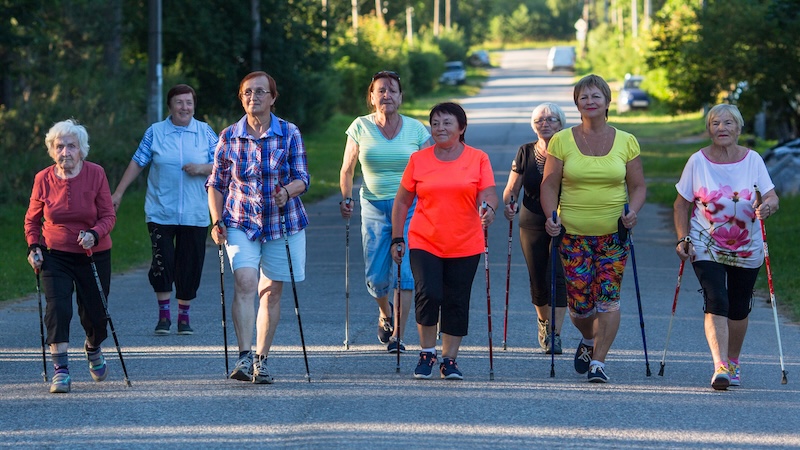Walking Despite Arthritis
Tips to make walking easier and increase intensity

Exercise can be difficult, especially with arthritis and similar challenges. Dr. Howard LeWine of Harvard Health Publishing offers ideas for walking despite arthritis.
Question: I try to walk every day despite my arthritis. I want to step up the intensity. What are some ways to help get me out of the door on days I feel more pain and stiffness?
Answer: I admire your desire to look for ways to get more exercise despite the arthritis. Here are some tips to help make walking easier.
Make walking easier
- Schedule walks for times of the day when you are least likely to experience your worst symptoms.
- Before walking, apply heat to sore joints or take a warm shower or bath. After walking, cold packs may be helpful.
- Warm up by walking at a slower pace than normal. Use slow movements during your warm-up and gradually extend your range of motion.
Increase intensity in walking despite arthritis
There are multiple ways to increase your exercise intensity.
1. Do interval training.
Intervals involve walking at a faster-than-usual pace for a brief period, followed by a slower pace to rest, and repeating the cycle for a set amount of time or distance.
A good starting point is to walk for three to four minutes at your average pace and then walk briskly for 30 seconds; repeat five to 10 times. Eventually, you can work up to longer brisk walking and shorter rest periods.
Or use landmarks to mark your interval breaks. For example, walk fast for one block, then slow down for one block. You could also count steps (do 25 fast steps, followed by 50 at a regular pace).
2. Add resistance.
Walking up hills and stairs adds resistance that can improve endurance by building your leg muscles, such as the quadriceps, hamstrings, and calves. For instance, do one or two minutes of stair climbing or find walking routes that include inclines.
3. Take body-weight exercise breaks.
For instance, every five minutes, do 10 or 20 walking lunges, air squats, or push-ups. It’s a great way to supplement your cardio workout with some strength training.
4. Carry a weighted backpack.
Adding extra weight to your walks can build your leg muscles and increase the cardio intensity of your workout. Fill a well-padded backpack or hydration pack with five to 10 pounds of weight.
5. Race against yourself.
Time how long it takes to walk a specific distance. Then, try to meet or beat that number each day. After you have achieved it, set a new challenge.
You can expect some leg muscle soreness after pushing yourself. But listen to your body. Sharp pain or more discomfort than usual in a joint means slow down. Don’t get so fixated on meeting goals that it leads to injury.
More from Dr. LeWine: Amp Up Your Swimming Workout
Howard LeWine, M.D., is an internist at Brigham and Women’s Hospital in Boston and assistant professor at Harvard Medical School. For additional consumer health information, please visit www.health.harvard.edu.)
©2025 Harvard University. For terms of use, please see https://www.health.harvard.edu/terms-of-use. Distributed by Tribune Content Agency, LLC.


